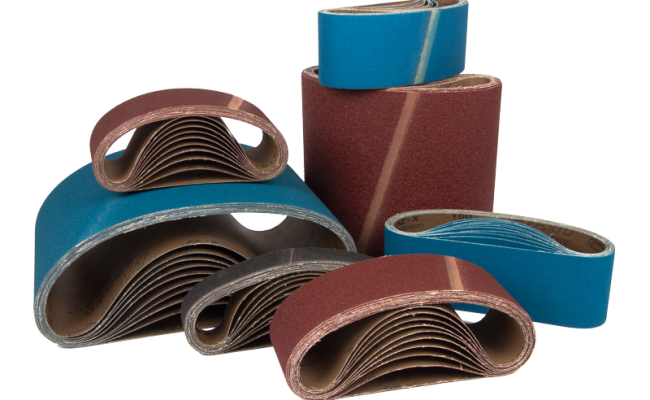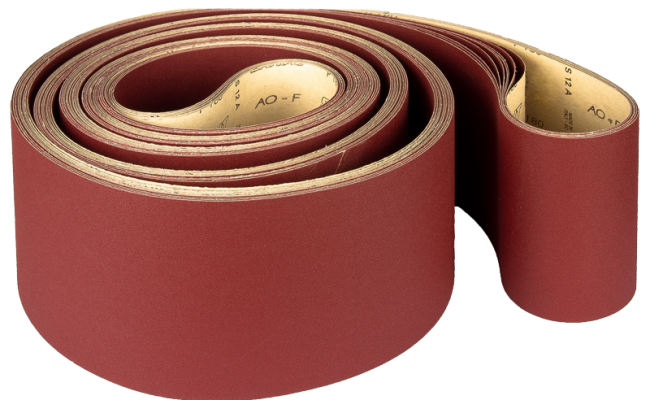Sanding belts are belts of infinite length, made of abrasive material. Belts are designed for mechanical sanding on machine tools.
They consist of three layers.
The first layer is the base: paper, material, compound, plastic (film).
The second layer – binding material: resins, glue.
The third layer – abrasive: alumina, silicon carbide, zirconium, ceramics.
Paper-based belts can be of different thickness, material-based strips tapes in flexibility. There are material tapes that can be used for both dry and wet sanding. The belts can also be of different grain sizes – closed grain, open grain and medium grain.
Sanding belts are divided into narrow, wide and segmental. Narrow up to 200 mm wide, wide up to 1400 mm wide, segmental up to 3000 mm – with two or more bonding stitches. Calibration belts P12-P80, sanding belts P100-P240, intermediate sanding (post-finishing sanding ) P240-P800 graininess belts.
Intended use is for stripped wood, its products and its composites, metals, plastics and other artificial wood.
Not only is it important to pay attention to the grain, length, width when selecting the belts, but in order to achieve a good result, it is important to use the belts properly, tension them correctly, and choose the proper bonding method.
In order for the belt to last longer and achieve the desired result of sanding , the storage conditions of the belt are also very important – indoor temperature, humidity, new and between uses the belt should be hung at a sufficient distance from each other, do not keep the belts in direct sunlight.


